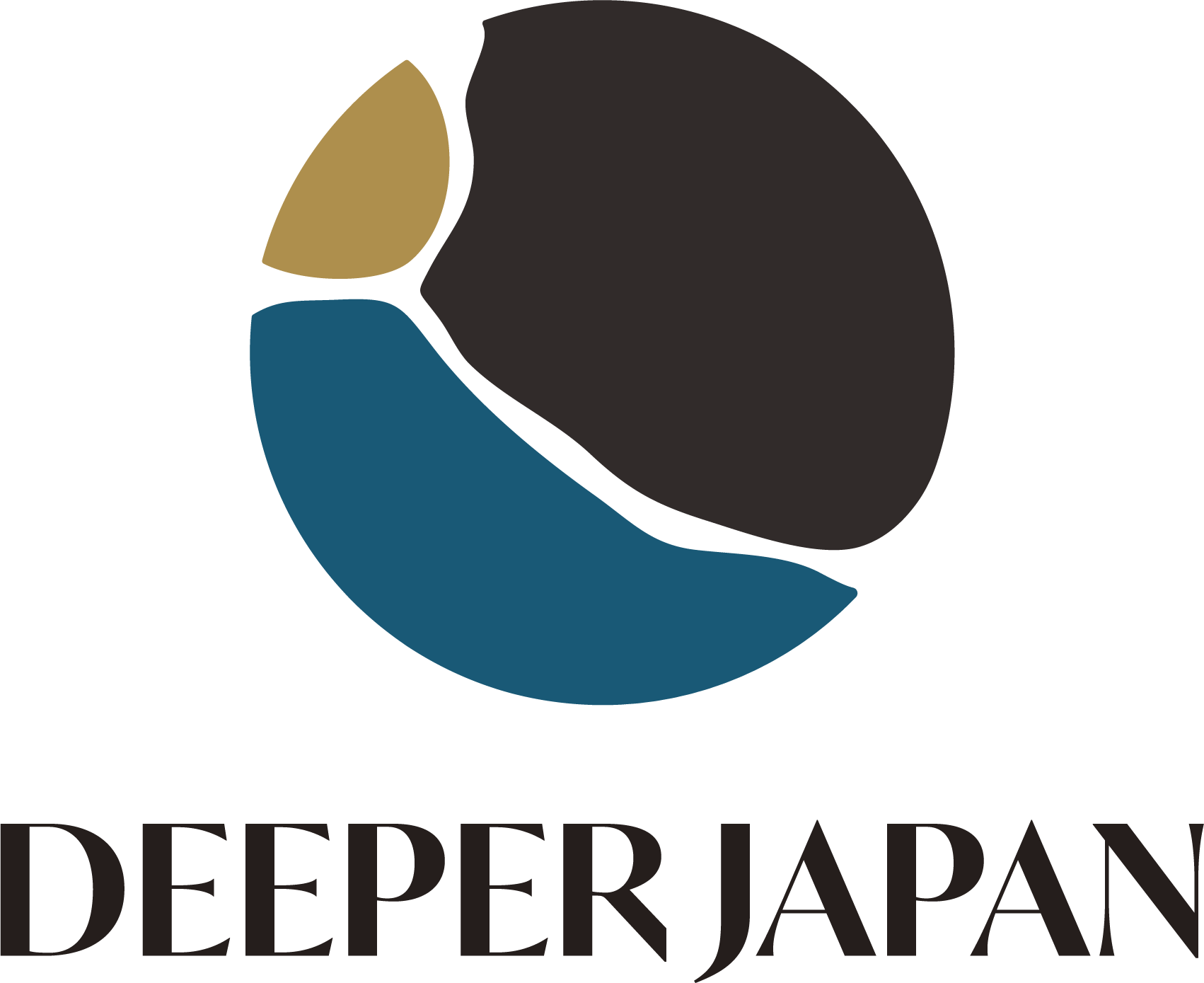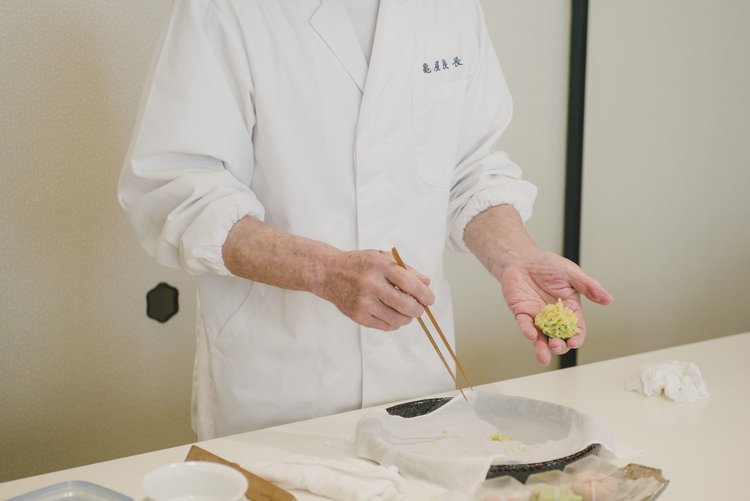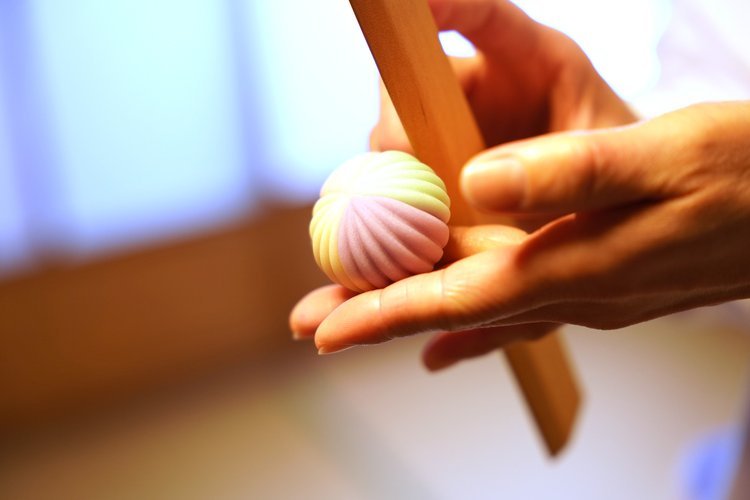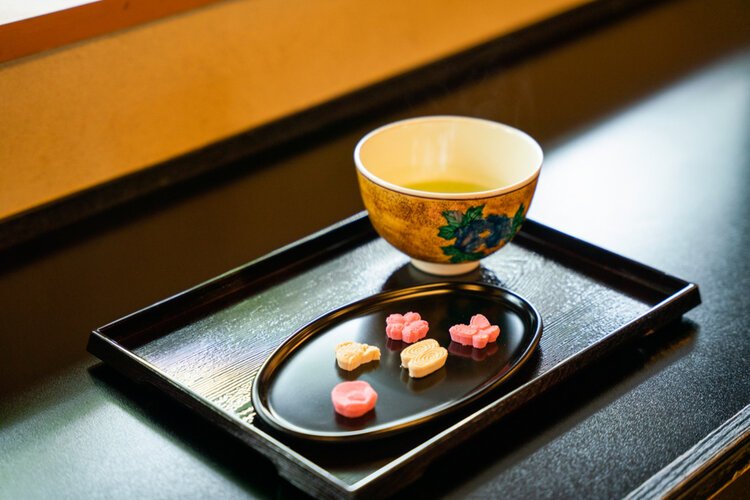Junichi, Wagashi Master
A lesson in the Kyoto aesthetic of 'hannari' from Junichi
Junichi creates intricate confections at a traditional Kyoto sweet shop that is over 200 years old. In addition to producing delicious creations, he also strives to convey the wonder of Japanese sweets through workshops for both local and foreign guests.
Make your own edible art at a wagashi shop established in 1803
Through these workshops, participants can experience first-hand the special features of Kyogashi (Kyoto wagashi). Unlike Kanto (Tokyo area) wagashi, Kyogashi has a gentleness in its coloring and shape. While still vibrant and colorful, Kyogashi has a distinguishing refinement and reserve. This is reflective of the Kyoto aesthetic principle of ‘hannari’, a sense of quiet beauty, a muted brightness. In addition to its particular coloring, the shape of Kyogashi is also a little more subdued than Kanto wagashi, showcasing a style that is smoother, simpler and rounder in shape.
These differences between Kansai and Kanto pop out most vividly in the context of tea ceremonies. Kanto wagashi, gorgeous in its coloring and intricate shapes, almost plays a lead role at tea ceremonies. However, in Kansai, it’s understood that the tea should always be the center of attention, and so the wagashi is made to complement the tea, never to overshadow it. Junichi explained that if the wagashi is too bright and competes with the leading role that is the tea, this can detract and interfere with enjoying the taste of the tea itself.
Compared to Western desserts, traditional Japanese wagashi sweets are relatively simple and minimal in their ingredients, and so the quality of each ingredient is critical. The wagashi at this Kyoto shop is delicious, in part because this shop was intentionally established close to a fresh water spring and the wagashi is made using this high-quality water.
Junichi enjoys sharing about the value of this tradition with people from all over, especially to those who are receptive and curious. “I’m very grateful when we have foreigner guests who come and listen well. Even if the shape is not perfect, the wagashi that these visitors make are beautiful, because they are doing their best and pouring themselves into it” he shares. If you love food and want to learn more about the Japanese and distinctive Kyoto aesthetic, this is the workshop for you.






